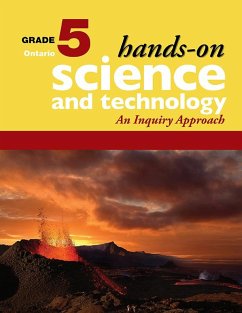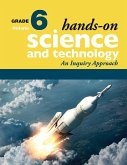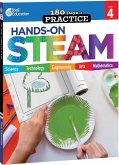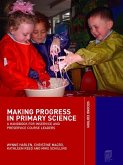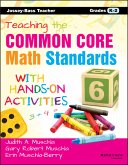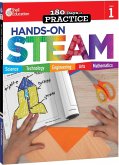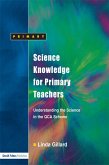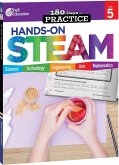Jennifer E. Lawson
Hands-On Science and Technology for Ontario, Grade 5 (eBook, PDF)
An Inquiry Approach
65,95 €
65,95 €
inkl. MwSt.
Sofort per Download lieferbar

33 °P sammeln
65,95 €
Als Download kaufen

65,95 €
inkl. MwSt.
Sofort per Download lieferbar

33 °P sammeln
Jetzt verschenken
Alle Infos zum eBook verschenken
65,95 €
inkl. MwSt.
Sofort per Download lieferbar
Alle Infos zum eBook verschenken

33 °P sammeln
Jennifer E. Lawson
Hands-On Science and Technology for Ontario, Grade 5 (eBook, PDF)
An Inquiry Approach
- Format: PDF
- Merkliste
- Auf die Merkliste
- Bewerten Bewerten
- Teilen
- Produkt teilen
- Produkterinnerung
- Produkterinnerung

Bitte loggen Sie sich zunächst in Ihr Kundenkonto ein oder registrieren Sie sich bei
bücher.de, um das eBook-Abo tolino select nutzen zu können.
Hier können Sie sich einloggen
Hier können Sie sich einloggen
Sie sind bereits eingeloggt. Klicken Sie auf 2. tolino select Abo, um fortzufahren.

Bitte loggen Sie sich zunächst in Ihr Kundenkonto ein oder registrieren Sie sich bei bücher.de, um das eBook-Abo tolino select nutzen zu können.
Experienced educators share their best, classroom-tested ideas in this teacher-friendly, activity-based resource.
The grade 5 book is divided into four units:
Human Organ Systems | Forces Acting on Structures and Mechanisms | Properties of and Changes in Matter | Conservation of Energy and Resources
STAND-OUT COMPONENTS
custom-written for the Ontario curriculum | uses an inquiry-based scientific and technological approach | builds understanding of Indigenous knowledge and perspectives
TIME-SAVING, COST-EFFECTIVE FEATURES
includes resources for both teachers and…mehr
- Geräte: PC
- mit Kopierschutz
- eBook Hilfe
- Größe: 17.31MB
Andere Kunden interessierten sich auch für
![Hands-On Science and Technology for Ontario, Grade 6 (eBook, PDF) Hands-On Science and Technology for Ontario, Grade 6 (eBook, PDF)]() Jennifer E. LawsonHands-On Science and Technology for Ontario, Grade 6 (eBook, PDF)65,95 €
Jennifer E. LawsonHands-On Science and Technology for Ontario, Grade 6 (eBook, PDF)65,95 €![180 Days: Hands-On STEAM: Grade 4 ebook (eBook, PDF) 180 Days: Hands-On STEAM: Grade 4 ebook (eBook, PDF)]() Cheryl Lane180 Days: Hands-On STEAM: Grade 4 ebook (eBook, PDF)22,95 €
Cheryl Lane180 Days: Hands-On STEAM: Grade 4 ebook (eBook, PDF)22,95 €![Making Progress in Primary Science (eBook, PDF) Making Progress in Primary Science (eBook, PDF)]() Wynne HarlenMaking Progress in Primary Science (eBook, PDF)88,95 €
Wynne HarlenMaking Progress in Primary Science (eBook, PDF)88,95 €![Teaching the Common Core Math Standards with Hands-On Activities, Grades K-2 (eBook, PDF) Teaching the Common Core Math Standards with Hands-On Activities, Grades K-2 (eBook, PDF)]() Erin MuschlaTeaching the Common Core Math Standards with Hands-On Activities, Grades K-2 (eBook, PDF)21,99 €
Erin MuschlaTeaching the Common Core Math Standards with Hands-On Activities, Grades K-2 (eBook, PDF)21,99 €![180 Days: Hands-On STEAM: Grade 1 ebook (eBook, PDF) 180 Days: Hands-On STEAM: Grade 1 ebook (eBook, PDF)]() Kristi Sturgeon180 Days: Hands-On STEAM: Grade 1 ebook (eBook, PDF)22,95 €
Kristi Sturgeon180 Days: Hands-On STEAM: Grade 1 ebook (eBook, PDF)22,95 €![Science Knowledge for Primary Teachers (eBook, PDF) Science Knowledge for Primary Teachers (eBook, PDF)]() Linda GillardScience Knowledge for Primary Teachers (eBook, PDF)33,95 €
Linda GillardScience Knowledge for Primary Teachers (eBook, PDF)33,95 €![180 Days: Hands-On STEAM: Grade 5 ebook (eBook, PDF) 180 Days: Hands-On STEAM: Grade 5 ebook (eBook, PDF)]() Kristin Kemp180 Days: Hands-On STEAM: Grade 5 ebook (eBook, PDF)22,95 €
Kristin Kemp180 Days: Hands-On STEAM: Grade 5 ebook (eBook, PDF)22,95 €-
-
-
Experienced educators share their best, classroom-tested ideas in this teacher-friendly, activity-based resource.
The grade 5 book is divided into four units:
STAND-OUT COMPONENTS
TIME-SAVING, COST-EFFECTIVE FEATURES
The grade 5 book is divided into four units:
- Human Organ Systems
- Forces Acting on Structures and Mechanisms
- Properties of and Changes in Matter
- Conservation of Energy and Resources
STAND-OUT COMPONENTS
- custom-written for the Ontario curriculum
- uses an inquiry-based scientific and technological approach
- builds understanding of Indigenous knowledge and perspectives
TIME-SAVING, COST-EFFECTIVE FEATURES
- includes resources for both teachers and students
- a four-part instructional process: activate, action, consolidate and debrief, enhance
- an emphasis on technology, sustainability, and personalized learning
- a fully developed assessment plan for assessment for, as, and of learning
- a focus on real-life technological problem solving
- learning centres that focus on multiple intelligences and universal design for learning (UDL)
- land-based learning activities and Makerspace centres
- access to digital image banks and digital reproducibles (Find download instructions in the Appendix of the book.)
Dieser Download kann aus rechtlichen Gründen nur mit Rechnungsadresse in A, D ausgeliefert werden.
Produktdetails
- Produktdetails
- Verlag: Portage & Main Press
- Seitenzahl: 343
- Altersempfehlung: ab 18 Jahre
- Erscheinungstermin: 7. September 2020
- Englisch
- ISBN-13: 9781553799405
- Artikelnr.: 69987474
- Verlag: Portage & Main Press
- Seitenzahl: 343
- Altersempfehlung: ab 18 Jahre
- Erscheinungstermin: 7. September 2020
- Englisch
- ISBN-13: 9781553799405
- Artikelnr.: 69987474
- Herstellerkennzeichnung Die Herstellerinformationen sind derzeit nicht verfügbar.
Jennifer E. Lawson, PhD, is the creator of the Hands-On books published by Portage & Main Press. As senior writer and editor for the series, she has contributed to more than 50 publications for teachers and students. Jennifer provides professional development workshops for educators locally, nationally, and virtually, and is a Workplace Wellness Advisor. Her most recent book is a collective effort called Teacher, Take Care: A Guide to Well-Being and Workplace Wellness for Educators. She is also one of the founders of Mission to Mexico, an organization that supports schools in some of the most impoverished communities in Puerto Vallarta. Throughout her extensive career in education, Jennifer has worked as a classroom teacher, resource and special education teacher, consultant, principal, university instructor, and school trustee. She lives with her family in Winnipeg, Manitoba.
Introduction to Hands-On Science and Technology for Ontario, Grade 5 1
* Introduction to Hands-On Science and Technology 2
* Program Introduction 2
* The Inquiry Approach to Science and Technology 2
* 21st Century Teaching and Learning 3
* The Goals of the Science and Technology Program 3
* Hands-On Science and Technology Strands and Expectations 4
* Hands-On Science and Technology Fundamental Concepts and Big Ideas 4
* Hands-On Science and Technology Program Principles 5
* Infusing Indigenous Perspectives 5
* Cultural Connections 7
* Land-Based Learning 7
* Technology 7
* Sustainability 7
* Program Implementation 8
* Program Resources 8
* Classroom Environment 11
* Planning Units—Timelines 12
* Classroom Management 12
* Classroom Safety 12
* Scientific Inquiry Skills: Guidelines for Teachers 12
* Observing 12
* Questioning 13
* Exploring 13
* Classifying 13
* Measuring 14
* Communicating, Analyzing, and Interpreting 14
* Predicting 16
* Inferring 16
* Inquiry Through Investigation and Experiments 16
* Inquiry Through Research 17
* Online Considerations 18
* Addressing Students’ Literacy Needs 18
* Technological Problem Solving 18
* Makerspace 19
The Hands-On Science and Technology Assessment Plan 21
* Assessment for Learning 22
* Assessment as Learning 22
* Assessment of Learning 23
* Performance Assessment 24
* Portfolios 24
* Evidence of Student Achievement Levels for Evaluation 25
* Important Note to Teachers 25
* References 26
* Assessment Reproducibles 27
* Achievement Chart for Science & Technology 42
Unit 1: Human Organ Systems 45
* Introduction 46
* Unit Overview 50
* Curriculum Correlation 51
* Resources for Students 52
* 1 What Do We Know About Keeping Our Bodies Healthy? 56
* 2 Why Does What We Eat Matter? 61
* 3 What Happens to Food After We Eat It? 71
* 4 Why Is Water Important for a Healthy Body? 77.
* 5 How Can We Design and Construct a Model of the Digestive System? 81
* 6 Why Is Healthy Blood Red? 85
* 7 How Does Exercise Affect Your Heart and Lungs? 92
* 8 How Do Healthy Joints, Bones, and Muscles Help You Move? 100
* 9 How Does the Brain Send Messages to the Rest of the Body? 107
* 10 How Does Skin Protect Our Bodies? 113
* 11 How Do Our Bodies Fight Illness and Injury? 118
* 12 How Do I Keep My Body Healthy? 126
* 13 Inquiry Project: What More Do I Want to Know About Keeping My Body
Healthy? 129
Unit 2: Forces Acting on Structures and Mechanisms 133
* Introduction 134
* Unit Overview 138
* Curriculum Correlation 139
* Resources for Students 140
* 1 What Do We Know About Forces and Structures? 143
* 2 How Do Bridges Withstand Forces? 148
* 3 What Can We Learn About Forces and Machines? 154
* 4 How Does a Lever Make Work Easier? 158
* 5 How Does an Inclined Plane Make Work Easier? 167
* 6 How Does a Screw Make Work Easier? 171
* 7 How Does a Wedge Make Work Easier? 174
* 8 How Do Forces of Nature Affect the Environment? 178
* 9 How Can We Protect Ourselves From Forces in Our Environment? 184
* 10 Inquiry Project: How Can We Design a Structure to Withstand Forces
in the Environment? 188
Unit 3: Properties of and Changes in Matter 191
* Introduction 192
* Unit Overview 195
* Curriculum Correlation 196
* Resources for Students 197
* 1 What Do We Know About the Properties of Matter? 200
* 2 What Are Some Properties of Solids, Liquids, and Gases? 205
* 3 How Do Substances Interact With Water? 212
* 4 How Do Substances Interact to Produce Gases? 217
* 5 How Can We Measure and Compare the Mass of Objects? 221
* 6 How Does Water Behave as it Melts, Freezes, Evaporates, or
Condenses? 227
* 7 What Is a Physical Change? 233
* 8 How Can We Identify a Chemical Change? 237
* 9 How Does Food Preparation Depend on Physical and Chemical Changes?
242
* 10 How Can We Practise Safety With Household Chemicals? 248
* 11 What Is the Life Cycle of a Manufactured Product? 252
* 12 Inquiry Project: How Can We Create and Evaluate Household
Products? 256
Unit 4: Conservation of Energy and Resources 261
* Introduction 262
* Unit Overview 266
* Curriculum Correlation 267
* Resources for Students 268
* 1 What Do We Know About Energy? 271
* 2 What Can We Learn About Different Forms of Energy? 277
* 3 How Is Energy Transformed? 282
* 4 What Are Fossil Fuels? 286
* 5 What Are Renewable Energy Resources? 291
* 6 What Is Solar Power? 297
* 7 What Is Water Power? 300
* 8 How Do Renewable and Non-Renewable Resources Compare? 304
* 9 How Can We Conserve Energy? 307
* 10 Why Is It Important to Recycle? 314
* 11 Inquiry Project: What More Do I Want to Know About Energy? 319
* References 322
Appendix: Image Banks 323
About the Contributors 335
* Introduction to Hands-On Science and Technology 2
* Program Introduction 2
* The Inquiry Approach to Science and Technology 2
* 21st Century Teaching and Learning 3
* The Goals of the Science and Technology Program 3
* Hands-On Science and Technology Strands and Expectations 4
* Hands-On Science and Technology Fundamental Concepts and Big Ideas 4
* Hands-On Science and Technology Program Principles 5
* Infusing Indigenous Perspectives 5
* Cultural Connections 7
* Land-Based Learning 7
* Technology 7
* Sustainability 7
* Program Implementation 8
* Program Resources 8
* Classroom Environment 11
* Planning Units—Timelines 12
* Classroom Management 12
* Classroom Safety 12
* Scientific Inquiry Skills: Guidelines for Teachers 12
* Observing 12
* Questioning 13
* Exploring 13
* Classifying 13
* Measuring 14
* Communicating, Analyzing, and Interpreting 14
* Predicting 16
* Inferring 16
* Inquiry Through Investigation and Experiments 16
* Inquiry Through Research 17
* Online Considerations 18
* Addressing Students’ Literacy Needs 18
* Technological Problem Solving 18
* Makerspace 19
The Hands-On Science and Technology Assessment Plan 21
* Assessment for Learning 22
* Assessment as Learning 22
* Assessment of Learning 23
* Performance Assessment 24
* Portfolios 24
* Evidence of Student Achievement Levels for Evaluation 25
* Important Note to Teachers 25
* References 26
* Assessment Reproducibles 27
* Achievement Chart for Science & Technology 42
Unit 1: Human Organ Systems 45
* Introduction 46
* Unit Overview 50
* Curriculum Correlation 51
* Resources for Students 52
* 1 What Do We Know About Keeping Our Bodies Healthy? 56
* 2 Why Does What We Eat Matter? 61
* 3 What Happens to Food After We Eat It? 71
* 4 Why Is Water Important for a Healthy Body? 77.
* 5 How Can We Design and Construct a Model of the Digestive System? 81
* 6 Why Is Healthy Blood Red? 85
* 7 How Does Exercise Affect Your Heart and Lungs? 92
* 8 How Do Healthy Joints, Bones, and Muscles Help You Move? 100
* 9 How Does the Brain Send Messages to the Rest of the Body? 107
* 10 How Does Skin Protect Our Bodies? 113
* 11 How Do Our Bodies Fight Illness and Injury? 118
* 12 How Do I Keep My Body Healthy? 126
* 13 Inquiry Project: What More Do I Want to Know About Keeping My Body
Healthy? 129
Unit 2: Forces Acting on Structures and Mechanisms 133
* Introduction 134
* Unit Overview 138
* Curriculum Correlation 139
* Resources for Students 140
* 1 What Do We Know About Forces and Structures? 143
* 2 How Do Bridges Withstand Forces? 148
* 3 What Can We Learn About Forces and Machines? 154
* 4 How Does a Lever Make Work Easier? 158
* 5 How Does an Inclined Plane Make Work Easier? 167
* 6 How Does a Screw Make Work Easier? 171
* 7 How Does a Wedge Make Work Easier? 174
* 8 How Do Forces of Nature Affect the Environment? 178
* 9 How Can We Protect Ourselves From Forces in Our Environment? 184
* 10 Inquiry Project: How Can We Design a Structure to Withstand Forces
in the Environment? 188
Unit 3: Properties of and Changes in Matter 191
* Introduction 192
* Unit Overview 195
* Curriculum Correlation 196
* Resources for Students 197
* 1 What Do We Know About the Properties of Matter? 200
* 2 What Are Some Properties of Solids, Liquids, and Gases? 205
* 3 How Do Substances Interact With Water? 212
* 4 How Do Substances Interact to Produce Gases? 217
* 5 How Can We Measure and Compare the Mass of Objects? 221
* 6 How Does Water Behave as it Melts, Freezes, Evaporates, or
Condenses? 227
* 7 What Is a Physical Change? 233
* 8 How Can We Identify a Chemical Change? 237
* 9 How Does Food Preparation Depend on Physical and Chemical Changes?
242
* 10 How Can We Practise Safety With Household Chemicals? 248
* 11 What Is the Life Cycle of a Manufactured Product? 252
* 12 Inquiry Project: How Can We Create and Evaluate Household
Products? 256
Unit 4: Conservation of Energy and Resources 261
* Introduction 262
* Unit Overview 266
* Curriculum Correlation 267
* Resources for Students 268
* 1 What Do We Know About Energy? 271
* 2 What Can We Learn About Different Forms of Energy? 277
* 3 How Is Energy Transformed? 282
* 4 What Are Fossil Fuels? 286
* 5 What Are Renewable Energy Resources? 291
* 6 What Is Solar Power? 297
* 7 What Is Water Power? 300
* 8 How Do Renewable and Non-Renewable Resources Compare? 304
* 9 How Can We Conserve Energy? 307
* 10 Why Is It Important to Recycle? 314
* 11 Inquiry Project: What More Do I Want to Know About Energy? 319
* References 322
Appendix: Image Banks 323
About the Contributors 335
Introduction to Hands-On Science and Technology for Ontario, Grade 5 1
* Introduction to Hands-On Science and Technology 2
* Program Introduction 2
* The Inquiry Approach to Science and Technology 2
* 21st Century Teaching and Learning 3
* The Goals of the Science and Technology Program 3
* Hands-On Science and Technology Strands and Expectations 4
* Hands-On Science and Technology Fundamental Concepts and Big Ideas 4
* Hands-On Science and Technology Program Principles 5
* Infusing Indigenous Perspectives 5
* Cultural Connections 7
* Land-Based Learning 7
* Technology 7
* Sustainability 7
* Program Implementation 8
* Program Resources 8
* Classroom Environment 11
* Planning Units—Timelines 12
* Classroom Management 12
* Classroom Safety 12
* Scientific Inquiry Skills: Guidelines for Teachers 12
* Observing 12
* Questioning 13
* Exploring 13
* Classifying 13
* Measuring 14
* Communicating, Analyzing, and Interpreting 14
* Predicting 16
* Inferring 16
* Inquiry Through Investigation and Experiments 16
* Inquiry Through Research 17
* Online Considerations 18
* Addressing Students’ Literacy Needs 18
* Technological Problem Solving 18
* Makerspace 19
The Hands-On Science and Technology Assessment Plan 21
* Assessment for Learning 22
* Assessment as Learning 22
* Assessment of Learning 23
* Performance Assessment 24
* Portfolios 24
* Evidence of Student Achievement Levels for Evaluation 25
* Important Note to Teachers 25
* References 26
* Assessment Reproducibles 27
* Achievement Chart for Science & Technology 42
Unit 1: Human Organ Systems 45
* Introduction 46
* Unit Overview 50
* Curriculum Correlation 51
* Resources for Students 52
* 1 What Do We Know About Keeping Our Bodies Healthy? 56
* 2 Why Does What We Eat Matter? 61
* 3 What Happens to Food After We Eat It? 71
* 4 Why Is Water Important for a Healthy Body? 77.
* 5 How Can We Design and Construct a Model of the Digestive System? 81
* 6 Why Is Healthy Blood Red? 85
* 7 How Does Exercise Affect Your Heart and Lungs? 92
* 8 How Do Healthy Joints, Bones, and Muscles Help You Move? 100
* 9 How Does the Brain Send Messages to the Rest of the Body? 107
* 10 How Does Skin Protect Our Bodies? 113
* 11 How Do Our Bodies Fight Illness and Injury? 118
* 12 How Do I Keep My Body Healthy? 126
* 13 Inquiry Project: What More Do I Want to Know About Keeping My Body
Healthy? 129
Unit 2: Forces Acting on Structures and Mechanisms 133
* Introduction 134
* Unit Overview 138
* Curriculum Correlation 139
* Resources for Students 140
* 1 What Do We Know About Forces and Structures? 143
* 2 How Do Bridges Withstand Forces? 148
* 3 What Can We Learn About Forces and Machines? 154
* 4 How Does a Lever Make Work Easier? 158
* 5 How Does an Inclined Plane Make Work Easier? 167
* 6 How Does a Screw Make Work Easier? 171
* 7 How Does a Wedge Make Work Easier? 174
* 8 How Do Forces of Nature Affect the Environment? 178
* 9 How Can We Protect Ourselves From Forces in Our Environment? 184
* 10 Inquiry Project: How Can We Design a Structure to Withstand Forces
in the Environment? 188
Unit 3: Properties of and Changes in Matter 191
* Introduction 192
* Unit Overview 195
* Curriculum Correlation 196
* Resources for Students 197
* 1 What Do We Know About the Properties of Matter? 200
* 2 What Are Some Properties of Solids, Liquids, and Gases? 205
* 3 How Do Substances Interact With Water? 212
* 4 How Do Substances Interact to Produce Gases? 217
* 5 How Can We Measure and Compare the Mass of Objects? 221
* 6 How Does Water Behave as it Melts, Freezes, Evaporates, or
Condenses? 227
* 7 What Is a Physical Change? 233
* 8 How Can We Identify a Chemical Change? 237
* 9 How Does Food Preparation Depend on Physical and Chemical Changes?
242
* 10 How Can We Practise Safety With Household Chemicals? 248
* 11 What Is the Life Cycle of a Manufactured Product? 252
* 12 Inquiry Project: How Can We Create and Evaluate Household
Products? 256
Unit 4: Conservation of Energy and Resources 261
* Introduction 262
* Unit Overview 266
* Curriculum Correlation 267
* Resources for Students 268
* 1 What Do We Know About Energy? 271
* 2 What Can We Learn About Different Forms of Energy? 277
* 3 How Is Energy Transformed? 282
* 4 What Are Fossil Fuels? 286
* 5 What Are Renewable Energy Resources? 291
* 6 What Is Solar Power? 297
* 7 What Is Water Power? 300
* 8 How Do Renewable and Non-Renewable Resources Compare? 304
* 9 How Can We Conserve Energy? 307
* 10 Why Is It Important to Recycle? 314
* 11 Inquiry Project: What More Do I Want to Know About Energy? 319
* References 322
Appendix: Image Banks 323
About the Contributors 335
* Introduction to Hands-On Science and Technology 2
* Program Introduction 2
* The Inquiry Approach to Science and Technology 2
* 21st Century Teaching and Learning 3
* The Goals of the Science and Technology Program 3
* Hands-On Science and Technology Strands and Expectations 4
* Hands-On Science and Technology Fundamental Concepts and Big Ideas 4
* Hands-On Science and Technology Program Principles 5
* Infusing Indigenous Perspectives 5
* Cultural Connections 7
* Land-Based Learning 7
* Technology 7
* Sustainability 7
* Program Implementation 8
* Program Resources 8
* Classroom Environment 11
* Planning Units—Timelines 12
* Classroom Management 12
* Classroom Safety 12
* Scientific Inquiry Skills: Guidelines for Teachers 12
* Observing 12
* Questioning 13
* Exploring 13
* Classifying 13
* Measuring 14
* Communicating, Analyzing, and Interpreting 14
* Predicting 16
* Inferring 16
* Inquiry Through Investigation and Experiments 16
* Inquiry Through Research 17
* Online Considerations 18
* Addressing Students’ Literacy Needs 18
* Technological Problem Solving 18
* Makerspace 19
The Hands-On Science and Technology Assessment Plan 21
* Assessment for Learning 22
* Assessment as Learning 22
* Assessment of Learning 23
* Performance Assessment 24
* Portfolios 24
* Evidence of Student Achievement Levels for Evaluation 25
* Important Note to Teachers 25
* References 26
* Assessment Reproducibles 27
* Achievement Chart for Science & Technology 42
Unit 1: Human Organ Systems 45
* Introduction 46
* Unit Overview 50
* Curriculum Correlation 51
* Resources for Students 52
* 1 What Do We Know About Keeping Our Bodies Healthy? 56
* 2 Why Does What We Eat Matter? 61
* 3 What Happens to Food After We Eat It? 71
* 4 Why Is Water Important for a Healthy Body? 77.
* 5 How Can We Design and Construct a Model of the Digestive System? 81
* 6 Why Is Healthy Blood Red? 85
* 7 How Does Exercise Affect Your Heart and Lungs? 92
* 8 How Do Healthy Joints, Bones, and Muscles Help You Move? 100
* 9 How Does the Brain Send Messages to the Rest of the Body? 107
* 10 How Does Skin Protect Our Bodies? 113
* 11 How Do Our Bodies Fight Illness and Injury? 118
* 12 How Do I Keep My Body Healthy? 126
* 13 Inquiry Project: What More Do I Want to Know About Keeping My Body
Healthy? 129
Unit 2: Forces Acting on Structures and Mechanisms 133
* Introduction 134
* Unit Overview 138
* Curriculum Correlation 139
* Resources for Students 140
* 1 What Do We Know About Forces and Structures? 143
* 2 How Do Bridges Withstand Forces? 148
* 3 What Can We Learn About Forces and Machines? 154
* 4 How Does a Lever Make Work Easier? 158
* 5 How Does an Inclined Plane Make Work Easier? 167
* 6 How Does a Screw Make Work Easier? 171
* 7 How Does a Wedge Make Work Easier? 174
* 8 How Do Forces of Nature Affect the Environment? 178
* 9 How Can We Protect Ourselves From Forces in Our Environment? 184
* 10 Inquiry Project: How Can We Design a Structure to Withstand Forces
in the Environment? 188
Unit 3: Properties of and Changes in Matter 191
* Introduction 192
* Unit Overview 195
* Curriculum Correlation 196
* Resources for Students 197
* 1 What Do We Know About the Properties of Matter? 200
* 2 What Are Some Properties of Solids, Liquids, and Gases? 205
* 3 How Do Substances Interact With Water? 212
* 4 How Do Substances Interact to Produce Gases? 217
* 5 How Can We Measure and Compare the Mass of Objects? 221
* 6 How Does Water Behave as it Melts, Freezes, Evaporates, or
Condenses? 227
* 7 What Is a Physical Change? 233
* 8 How Can We Identify a Chemical Change? 237
* 9 How Does Food Preparation Depend on Physical and Chemical Changes?
242
* 10 How Can We Practise Safety With Household Chemicals? 248
* 11 What Is the Life Cycle of a Manufactured Product? 252
* 12 Inquiry Project: How Can We Create and Evaluate Household
Products? 256
Unit 4: Conservation of Energy and Resources 261
* Introduction 262
* Unit Overview 266
* Curriculum Correlation 267
* Resources for Students 268
* 1 What Do We Know About Energy? 271
* 2 What Can We Learn About Different Forms of Energy? 277
* 3 How Is Energy Transformed? 282
* 4 What Are Fossil Fuels? 286
* 5 What Are Renewable Energy Resources? 291
* 6 What Is Solar Power? 297
* 7 What Is Water Power? 300
* 8 How Do Renewable and Non-Renewable Resources Compare? 304
* 9 How Can We Conserve Energy? 307
* 10 Why Is It Important to Recycle? 314
* 11 Inquiry Project: What More Do I Want to Know About Energy? 319
* References 322
Appendix: Image Banks 323
About the Contributors 335
